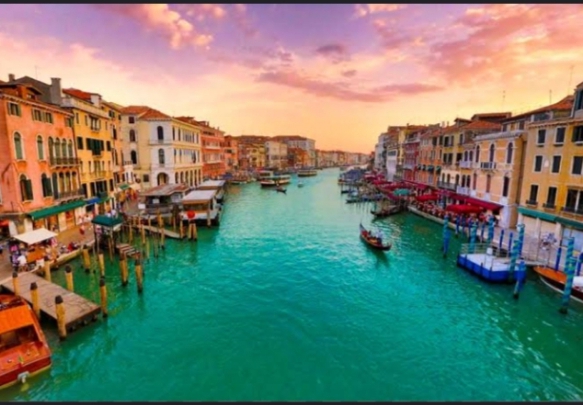While Venice remains a popular destination for tourists – especially those seeking a romantic getaway – not many know the history behind how, and why, the city came to be. Venice wasn’t always the floating city and the process of creating it was done by man, not nature, since turning it into one of the most fascinating cities in the world.
Venice, the “Serene Republic” floating on the shimmering Adriatic, holds a history as unique as its watery landscape. Its story isn’t simply one of whimsical gondolas and romantic bridges; it’s a tale of resilience, resourcefulness, and an ingenious adaptation to a challenging environment. So, why and how did this magnificent city arise amidst the salty embrace of the Venetian lagoon?
The turbulent waves of barbarian invasions swept across mainland Italy in the 5th century AD. Seeking solace, people from nearby Roman cities like Padua and Aquileia fled to the scattered islands of the Venetian lagoon. These marshy, unstable islets, surrounded by shallow waters and mudflats, seemed unlikely havens, yet they offered crucial protection from the chaos on land.
Life on these mudflats was harsh. The first Venetians lived in rudimentary huts, fishing and salt harvesting for sustenance. But necessity is the mother of invention, and soon, ingenious solutions began to emerge.
To build on the unstable mud, a clever technique was devised. Thousands of long wooden poles, primarily alder and oak, were driven deep into the lagoon’s bed, creating a “forest” of foundations beneath the waterline. These poles, resistant to rot due to constant water immersion and a lack of oxygen, became the city’s hidden backbone.
The Venetians further stabilized the islands by constructing stone banks along the canals, controlling the water flow and preventing erosion. This technique, called “bricole,” can still be seen protecting the foundations of many older buildings.
As the population grew, so did the need for efficient transportation. Canals were dug and deepened, transforming from natural channels into the city’s intricate circulatory system. Gondolas, nimble boats perfectly suited for navigating the narrow passages, became the iconic mode of transport.
Over time, the strategic advantages of the lagoon became apparent. The shallow waters and shifting channels acted as a natural moat, deterring potential invaders. Additionally, access to the Adriatic positioned Venice perfectly for trade, connecting East and West with its powerful fleet.
By the 10th century, the Serene Republic of Venice had emerged as a maritime powerhouse. Its dominance in the Silk Road fueled economic prosperity and cultural splendor. Exquisite Byzantine and Gothic architecture adorned the islands, with the Grand Canal becoming the city’s beating heart, lined with palazzos of wealthy merchants and Doges.
For centuries, Venetians have adapted their lives to the rhythms of the lagoon. Houses were built to withstand tides and floods, with elevated ground floors and waterproof cellars. Fishing and salt production remained vital industries, and even waste disposal was channeled through a sophisticated system of submerged pipes.
However, life on water also brings challenges. The city faces constant threats from rising sea levels and environmental shifts. The MOSE project, a complex system of underwater gates, is one testament to Venice’s ongoing battle to preserve its watery embrace.
Today, Venice stands as a mesmerizing testament to human ingenuity and adaptation. Its canals, bridges, and palazzos whisper tales of a glorious past, while its gondolas continue to ferry visitors through a maze of history and beauty. Despite the challenges, the spirit of the Serene Republic lives on, a testament to the city’s enduring bond with the water that cradles it.
This is just a glimpse into the captivating history of Venice and its watery connection. If you’d like to delve deeper into specific aspects, such as the intricacies of canal construction, the rise and fall of the Republic, or the cultural achievements of this unique city, I’m happy to guide you further through its captivating past.


One Reply to “All You Need to Know About Venice, the Floating City”